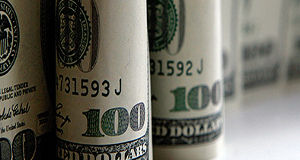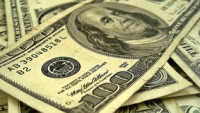 With markets already nervous about delays to US rate cuts after Fed chair Jay Powell reiterated his Wednesday press conference comments that a March rate cut was unlikely, the last thing they wanted to see was ISM prices paid for January surge to their highest levels in 11 months.
With markets already nervous about delays to US rate cuts after Fed chair Jay Powell reiterated his Wednesday press conference comments that a March rate cut was unlikely, the last thing they wanted to see was ISM prices paid for January surge to their highest levels in 11 months.
This surprise increase in prices saw European markets slide into the red, while US markets also retreated as they gave up some of their Friday gains, although they did close off the lows of the day, which should translate into a modestly higher open for markets here in Europe this morning.
The stickiness around services inflation doesn’t appear to be an isolated instance either given that we are also seeing it in the UK.
It also hasn’t gone unnoticed by Neel Kashkari, President of the Minneapolis Fed in comments made yesterday, when he said policymakers should take their time when it comes to cutting rates, arguing that the neutral rate may in fact be higher than it has been in the past, with the US dollar rising to its highest levels in almost 3-months.
This certainly appears to be being borne out in the recent US CPI numbers which appear to have carved out a short-term base at around the 3% level these past few months. While Kashkari doesn’t have a vote this year, he may well not be alone in thinking this so it will be interesting to see if other Fed policymakers are of a similar mind in the days ahead.
Cleveland Fed President Loretta Mester is due to speak later today and has been hawkish in the past so it will be interesting if she echoes Kashkari’s comments about the possibility that the neutral rate may well be higher than it has been in the past.
To understand what is meant by the neutral rate, or r-star as it is sometimes known – it’s the rate at which the interest rate is at the optimum level that neither stimulates the economy, or slows it down, while keeping unemployment low and inflation stable.
The problem is the rate is dynamic and is not fixed at any particular level which means a lot of it is down to running data through various economic models. In the runup to the financial crisis it was thought to be at around 2% which helps to explain central bank obsession with a 2% inflation target.
With all the challenges that have faced the global economy over the last 5 years it has been argued that the neutral rate might be higher and that in trying to force inflation down back to the 2% target central banks might do more harm than good.
Which brings us back to the prospect of early rate cuts or rather the reluctance on the part of central banks to commit to them, which has seen yields move sharply higher in both the US and the UK over concern that inflation is proving to be stickier than it should be, particularly in the services sector.
Yesterday Bank of England chief economist Huw Pill reiterated his view that rate cuts were coming but that they weren’t imminent and that the MPC wanted to see more evidence.
Overnight the Reserve Bank of Australia remained non-committal on its own timeline for when to give a steer on a policy change, given that it also is facing pressures from domestic price pressures, leaving rates unchanged at 4.35%.
In Europe, the challenges facing the economy are much more evident with Germany probably in recession and factory orders in December expected to decline by -0.2%.
We also have the January construction PMIs for both Germany and the UK, with both expected to remain in contraction territory although the UK is in much better shape with expectations of an improvement to 47.2. In Germany, the situation is more dire, with December at 37, and little signs of an improvement on the horizon.
This weakness in Europe’s largest economy makes it much more challenging for the European Central Bank in convincing the market that it won’t consider a rate cut before June.
EUR/USD – slipped below support at 1.0770/80 yesterday and fell to the 1.0720 area and December lows. Below 1.0720 risks further declines towards 1.0580. Resistance now comes in at the 1.0780 area and behind that at the 1.0900 area.
GBP/USD – has finally succumbed to a move below the 1 2590 area, as well as dropping below the 200-day SMA. This break raises the risk of further declines towards 1.2430, which would retrace 50% of the rebound from the October lows at 1.2035. We need to get above 1.2800 to maintain upside momentum and target the 1.3000 area.
EUR/GBP – has rallied back towards resistance at the 0.8570/80 area, with a break targeting the 0.8620 level. While below this resistance the risk remains for a move towards 0.8470.
USD/JPY – having found support at the 50-day SMA at 145.80 last week we’ve pushed slightly above the January highs at 148.80, with a break above 149.00 targeting the 150.00 area. Below 145.80 targets the 200-day SMA at 144.30.












